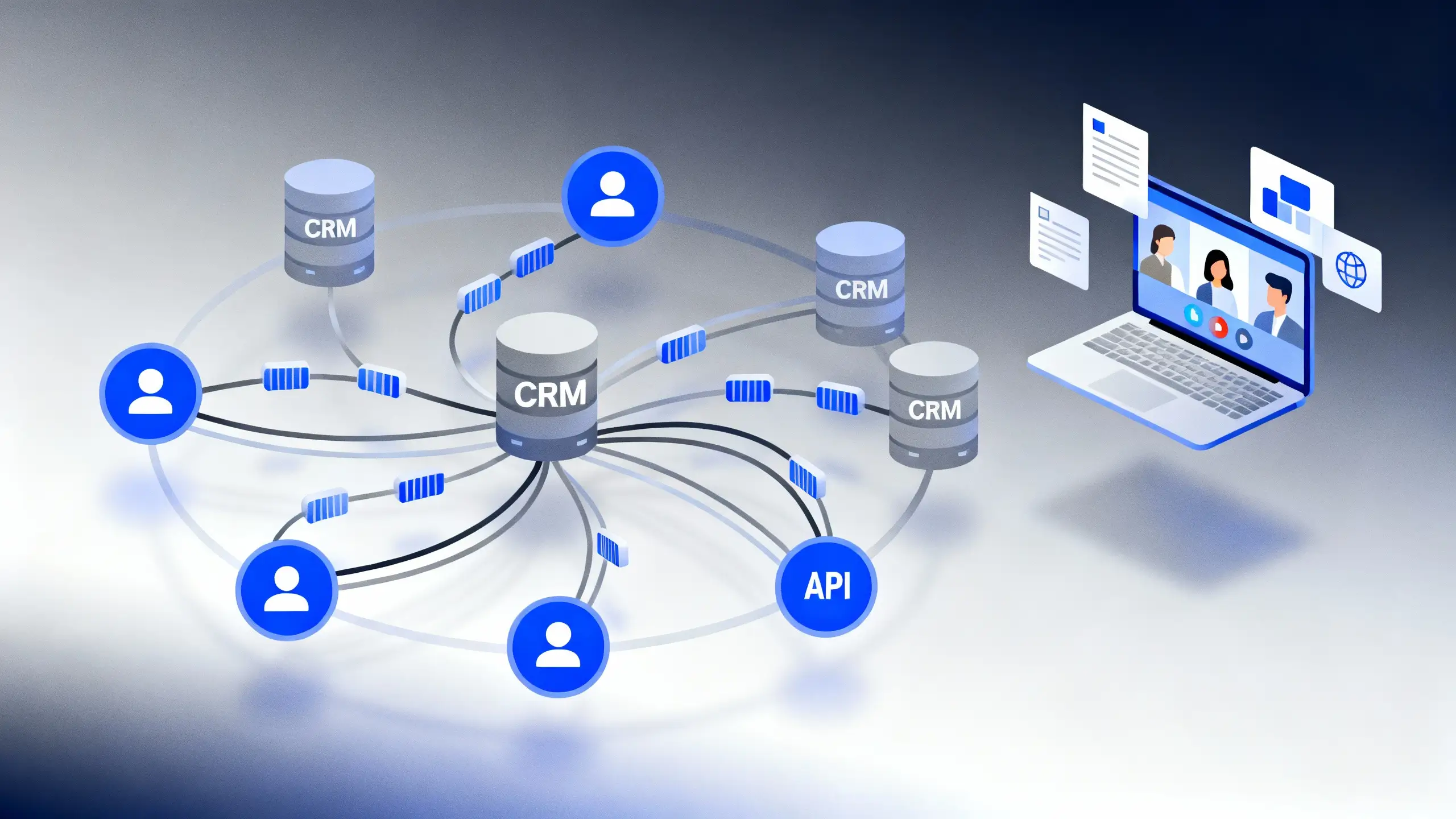Get In Touch
Email Us
info@aporios.comAPORIOS
APORIOS
APORIOS


Picture a sales rep updating a deal in the CRM from Bali while support logs a ticket in another tool from Toronto. Nothing breaks, updates sync instantly, and nobody waits for manual nudges. That’s API-first automation in practice—everything’s built for machines to talk, not humans to click.
Start with clear API contracts. Each integration move is documented, versioned, and testable. Skip the brittle, browser-based tasks and run your workflows through APIs so batch jobs, sync scripts, and notifications are all consistent (and repeatable).
Map out responsibilities before you ship. Define SLAs, owners, and incident paths for every sync or trigger. Remote teams need async flows, auditable logs, and minimal permissions: only the right component touches the right data.
Your team’s skills will tip the scale between plug-and-play iPaaS solutions and custom connectors. Keep it simple when you can, custom when you must. This approach scales with team growth and distributed ops. For the nuts and bolts, dig into [CRM automation basics] for remote teams.
A deal gets marked "Closed Won" in your CRM. Instantly, a webhook pings your automation platform, posting a celebration message to Slack and creating a ticket for onboarding in Jira. That’s the core loop: event, trigger, action, sync.
Here’s how remote teams typically plug it all together:
Consistent patterns like these keep your CRM, project tools, and comms apps aligned—no matter where your team is sitting. For more on setting these up, see our guide on CRM automation basics.
A single contact gets updated in Salesforce, but the same info looks off in Zendesk—classic data drift. That’s why you need a canonical customer object: decide which fields matter and who owns which. Write down data mapping rules early, especially around emails, IDs, and deduplication keys.
Keep it real-time for things like deal stages or support escalations. For slower, bulk changes (like lists or reports), go near real time or batch. Mark which fields are source-of-truth. If marketing owns email, sales owns last contact date, be explicit. Set up reconciliation jobs that can audit, backfill, and recover after outages.
Don’t forget normalization. Make sure picklists, currencies, and time zones match across apps. Cleaning those up later is way harder than mapping them up front.
Recommended read: For a primer on syncing fundamentals and record rules, check out CRM automation basics.
Picture a bug that slipped through because a sync job pushed test data into production. No fun. Start in a sandbox, not your live CRM, and set up seeded test records so you can run automations again and again.
Lock down access on both sides. Grant each integration the least-privilege OAuth scopes it actually needs. Use a secrets manager for API tokens, and make sure your connectors refresh tokens automatically.
You’ll hit rate limits faster than you think. Add paging for any bulk reads, backoff retries for write spikes, and cache heavy GETs. Validate payloads with contract tests before anything moves to prod. Catch field drift or missing fields early.
When ready to launch, use feature flags so you can flip integrations for small, safe groups. Monitor for edge cases and support a phased user rollout.
Tool tip: For more basics and gotchas, check out CRM automation basics.
Picture a customer record updating twice in one minute—one job runs twice, or webhook events land out of order. Silent failures like this haunt CRM integrations if you don’t build for the mess.
Start with error handling: use idempotency keys on inserts and updates so retried jobs don’t double-write. Bounded retries help—set a max, then alert. Always verify webhook signatures to stop spoofed events. Webhooks can resend, so dedupe events before processing.
Race conditions lurk when bulk syncs overlap with new updates. Guard inbound and outbound event processing to lock on the right record version, or queue operations. Normalize formats early—treat timestamps, number formats, and time zones as first-class fields, not afterthoughts.
Make failures visible. Add structured logs for every sync and send traces to your observability stack. SLO-based alerts beat daily log scrapes every time. Want more tool ideas? Check out top CRM automation.
Picture a deal moving stages in your CRM. With webhooks, your automations hear about it instantly. Polling catches updates on a timer, filling in when live triggers flop. Use webhooks where possible, backfill with polling, and always track delivery IDs to prevent duplicates.
If your API yells "slow down," don't panic. Build in token-bucket throttling and exponential backoff, especially on bulk actions. Cache frequent reads, and use batched writes when your use case allows.
iPaaS—like Make or Zapier—makes standard integrations quick. If your flows are weird or you need robust error handling, custom code is better. Lots of teams blend both: iPaaS starts the process, then hands off to a microservice for the tricky bits.
Push only the signals that matter. Pipe high-stakes CRM events to Slack or Teams with short summaries. Dashboards and scheduled digests cut noise and make it easy to catch up later. For fundamentals, scan this CRM automation basics guide.


